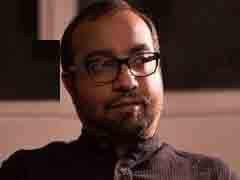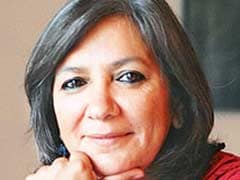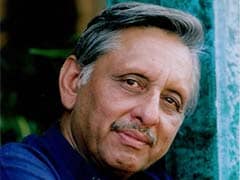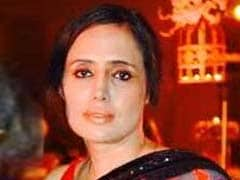- Home/
- What Obama Will Try To Win From PM Modi : Foreign Media
What Obama Will Try To Win From PM Modi : Foreign Media
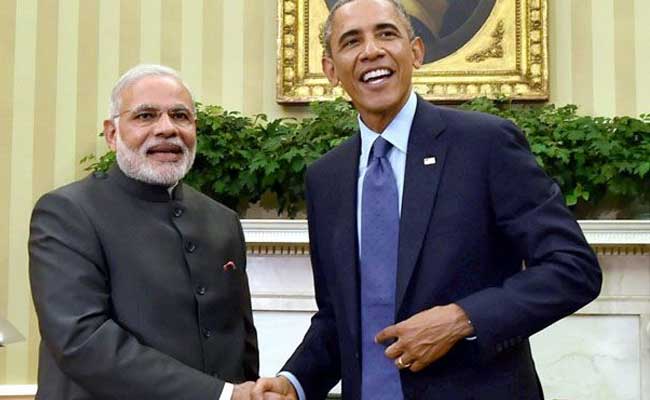
India is centrally important to a global effort to combat climate change through agreements on sustainable carbon emission levels and development of renewable energy sources. Since it is home to almost 1.3 billion people - around a sixth of the world's population - its energy policies have huge implications for a very global dilemma.
With President Obama hosting Modi at the White House on Tuesday before the latter addresses Congress on Wednesday, there are high hopes that Modi will firmly state his government's commitments to renewable energy. Judging by public statements both have made, Modi and Obama see combating climate change not only as an imperative that will shape their legacies, but also as a foundation for their personal bond.
On the sidelines of climate talks in Paris in December that were aimed at curtailing out-of-control global warming trends, Modi said he had an "uncompromising commitment on climate change." But he was quick to append the qualification that progress must come "without affecting our ability to meet the development aspirations of humanity."
For his part, Obama said that India's approach to the Paris talks would "set the tone not just for today but for decades to come."
Getting India to "join" the Paris accords is one of the possible outcomes of Modi's meeting with Obama in June. Both India and the United States signed the accord, but that is different from joining it. Signing is akin to acknowledging the agreement's merits, whereas joining is closer to making a commitment to adhere to it. The United States has pledged to join as soon as possible - meaning once Congress gives its approval - but India has not made such a public statement. Only once at least 55 countries representing at least 55 percent of carbon emissions join the treaty does it even come into effect. With the sizes of U.S. and India's populations and economies, their joining would go a long way toward making that happen. (Only 17 countries have joined so far, representing .04 percent of global emissions. Because of the European Union's large bureaucracy, it is unlikely that they will be able to join in time for the next climate talks in Marrakesh, Morocco in November.)
Another possible step forward would be India joining the United States and other Western countries who seek to amend the Montreal Protocol. That is yet another international agreement, this time geared toward HFCs, a greenhouse gas created by appliances, such as air conditioning units and refrigerators, that cause many times as much damage to the ozone layer as carbon dioxide emissions. Modi has previously signaled willingness to cooperate with the United States on amending the Montreal Protocol to cut down on HFCs, but has so far stuck by its own, less bold proposed amendment.
One of Modi's most ambitious plans is to create 100 gigawatts of power from solar power, and an additional 75 from other renewable sources, such as wind. To be sure, his energy policies would also entail a doubling of the country's coal production in a very short amount of time, with hundreds of new plants coming up, mostly in the country's south and east.
The United States is integral to the success of the solar power plan because most of the world's solar technology is produced here. India will need favorable financing deals to procure billions and billions of dollars worth of solar equipment to make Modi's plan become a reality. As such, the opportunity for the United States is economically huge, too - India is essentially saying it wants to create the world's largest market for renewable energy in the world.
© 2016 The Washington Post
(Except for the headline, this story has not been edited by NDTV staff and is published from a syndicated feed)
................................ Advertisement ................................
Opinion
MoreOpinion: China Has Helped India's Cause With TrumpMihir Sharma, Bloomberg
Thursday June 29, 2017Very little was expected in India from Prime Minister Narendra Modi's visit to the U.S., and for good reason: Modi had gone out of his way to cultivate a personal relationship with Barack Obama, including famously pouring out a cup of tea for him and the cameras when Obama visited India.
Opinion: Modi's US Speech Was Letter Perfect, Ticked Off Every BoxAshok Malik
Friday June 10, 2016Without taking recourse to the old wailing sheet and cribbing to everyone about Islamabad, Modi has devised a mechanism to shape the debate to India's advantage.
Opinion: Modi Ignored Advice To Make Obama Squirm. It Has Paid Off.Jyoti Malhotra
Saturday June 04, 2016The visit to the US in the coming week, in fact, brings Obama's relationship with both Modi and India full circle.
Blogs: कादम्बिनी के कीबोर्ड से : क्या परमाणु करार पर पीछे हटे हम?
Sunday February 08, 2015असल में परमाणु रिएक्टरों में हादसे की सूरत में जो हर्जाना होगा, वह रिएक्टर चलाने वाले को यानि ऑपरेटर को देना होगा। कानून में यह प्रावधान है कि अगर ऑपरेटर चाहे तो वह सामान और ईंधन आपूर्ति करने वाले पर हर्जाने के लिए दावा कर सकता है। लेकिन यहां पर समझने वाली बात यह है कि ऑपरेटर कौन होगा।
Opinion: Mani-Talk: Modi is Turning Us into America's New PakistanMani Shankar Aiyar
Thursday February 12, 2015In "Cold War II", battlefield could be India, writes Mani Shankar Aiyar.
Opinion: Obama Had Pointed Message for Modi 2.0Shashi Tharoor
Wednesday January 28, 2015Clear warning that PM will fail if he reverts to Modi 1.0, writes Shashi Tharoor.
Opinion: What Pakistan Makes of Obama-Modi ChemistryMehr Tarar
Tuesday January 27, 2015Acceptance of Modi's goal-oriented leadership, writes Mehr Tarar.



